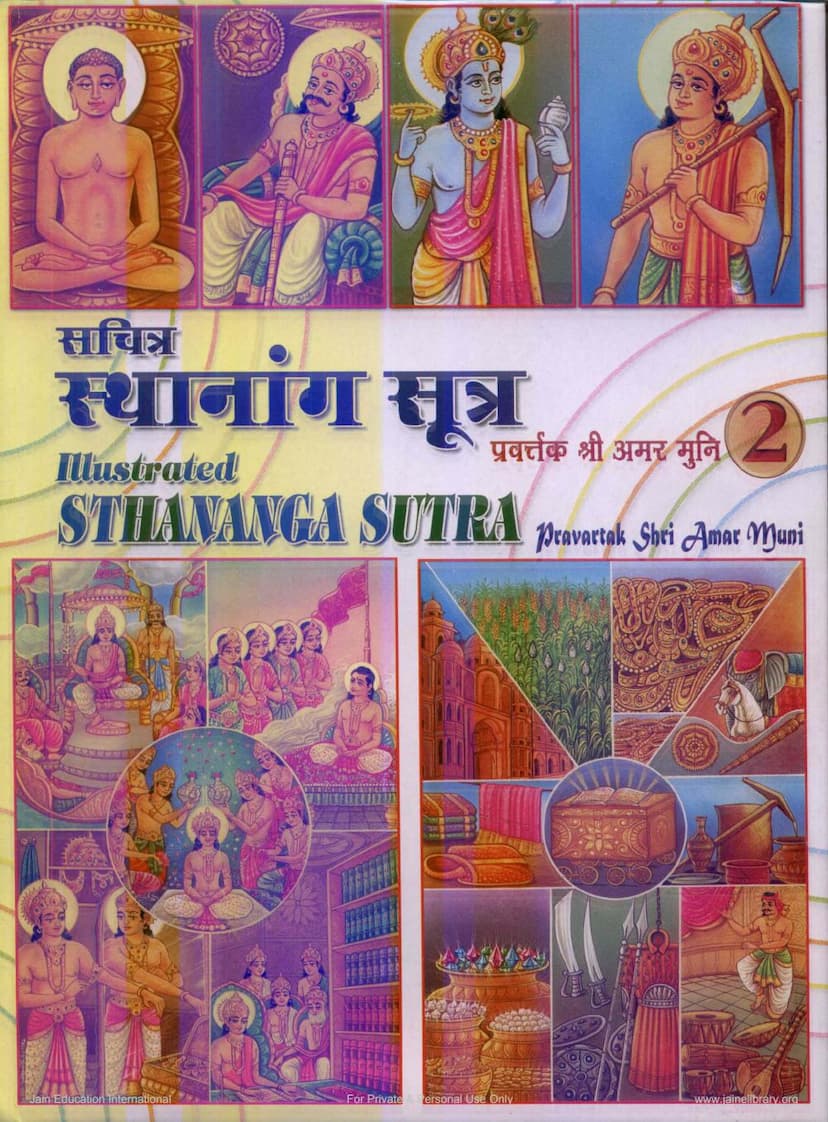Agam 03 Ang 03 Sthanang Sutra Part 02 Sthanakvasi
Added to library: September 1, 2025

Summary
This is a summary of the provided Jain text, focusing on the key aspects and themes within the excerpt you've shared:
Book Title: Agam 03 Ang 03 Sthanang Sutra Part 02 Sthanakvasi Author(s): Amarmuni, Shreechand Surana Publisher: Padma Prakashan
This document is the second part of the "Sthanang Sutra," one of the foundational texts of Jainism, compiled in a unique numerical style. It covers "Sthaans" (places or categories) from the fourth to the tenth, providing a comprehensive and detailed exposition of various Jain philosophical and ethical principles, as well as elements of cosmology, ethics, and psychology.
Key Features and Content:
- Numerical Classification: The Sthanang Sutra is characterized by its numerical organization, categorizing subjects based on numbers like five, six, seven, and eight. This structured approach makes the vast teachings of Jainism accessible and systematic.
- Comprehensive Subject Matter: The text covers an extensive range of topics, demonstrating the Jain worldview. These include:
- Metaphysics and Philosophy: Explores concepts of soul, matter, space, time, and the nature of existence.
- Ethics and Conduct: Details vows (Mahavrat and Anuvrat), principles of self-regulation (Samiti), purity, atonement, and the conduct of ascetics (Nirgranth and Nirgranthis).
- Cosmology: Describes the structure of the universe, including the seven hells (Mahanarak), celestial vehicles (Vimaan), the structure of the universe (Lokasthiti), and geographical elements like rivers and mountains.
- Astrology and Astronomy: Discusses constellations (Nakshatra) and their significance.
- Psychology and Human Nature: Analyzes human conditions, mental states (Bhavana), desires (Sanjna), and different types of people based on their knowledge, conduct, and temperament.
- Health and Medicine: Touches upon aspects of ailments (Vyadhi) and their treatments, as well as the effects of poison (Vish).
- History and Biography: Mentions the lineages of kings and Tirthankaras, the nature of their lives, and their adherence to principles.
- Arts and Culture: Details aspects of music (Svar) and poetry (Kavya).
- Social and Political Structure: Explains the organization of religious orders (Sangh), the roles of leaders (Acharya, Upadhyaya, Gani), and the concept of regal symbols and penal codes (Dandniti).
- Analogies and Illustrations: The text employs vivid analogies, such as the strength of poison, the types of trees, the properties of balls made from various materials, and the nature of clouds, to illustrate complex spiritual and ethical concepts. The inclusion of illustrations further enhances the understanding of these concepts.
- Editor's Contribution: The scholarly editor, Shri Amar Muni ji Maharaj, has included brief elaborations to clarify the aphoristic style of the original text. These elaborations utilize Sanskrit commentaries and other ancient Jain works, making the text more understandable for a wider audience.
- Dedication and Support: The publication is dedicated to the memory of Gurudev Bhandari Shri Padmachandra Ji M. and acknowledges the generous support of various individuals and families who contributed to the "Shrut Seva" (service to scriptures).
- Importance of Proper Reading: The text emphasizes the need for respectful and careful study of scriptures, warning that careless reading can be detrimental.
Overall Purpose:
This volume of the Sthanang Sutra, particularly Part 2, aims to present the teachings of Jainism in a structured, numerical, and detailed manner. It seeks to provide readers with knowledge that is both edifying and practically useful for daily life, covering a vast spectrum of spiritual, ethical, and worldly knowledge. The editor's effort to explain the complex aphorisms using various commentaries ensures the text's relevance and clarity for modern readers.